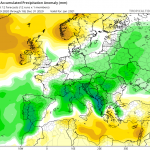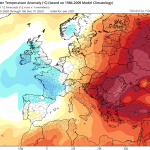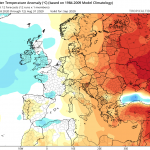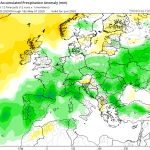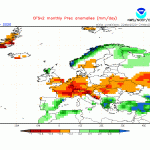January 2021 Weather Outlook (and more)
According to climate data gathered over numerous years; the mean temperature in January is of 12.7°C (a 15.4°C high and a 9.9°C low), whilst the total precipitation in January is of 85.4 mm.
With regards to temperature, January 2021 is likely to follow the warmer than average trend set in December. No major cold snap, with nighttime lows well below 10°C, looks likely. As is to be expected as we reach the peak of winter, the second half of the month will be the cooler half. With regards to precipitation, it’s likely to follow in the steps of November and December. Over the past two months, total rainfall was lower than the mean, but it was not extremely low. We’re predicting rainfall to be approximately 25% less than the mean by the end of January. It will maintain another trend set in recent months. Whilst windy days will not be lacking, the low occurrence pf extremely strong winds will be noticeable.
FURTHER OUTLOOK (TEMPERATURE)
February 2021 – Warmer than Average
March 2021 – Average
April 2021 – Average
FURTHER OUTLOOK (PRECIPITATION)*
February 2021 – Average
March 2021 – Average
April 2021 – Wetter than Average
Disclaimer: Specific details on the weather may only be given for a couple of days in advance brasil-libido.com. This long-term forecast is not meant to determine specific weather parameters at a point on the Maltese Islands. Instead, it looks at large scale weather patterns across Europe, and attempts to determine how these may influence the weather locally. Our levels of confidence in the forecast for the month ahead are fair. These are reasonably lower when it comes to the ‘Further Outlook’ section. Weather forecasts are an interpretation of possible weather events based on trends, maps and climate data at the time of the forecast, and as a result, predictions may always change over time. Maltese Islands Weather can never be held responsible for any direct, indirect, incidental, consequential, special or exemplary damages or even lost profit resulting from any use or misuse of this data. The user assumes the entire risk related to the use or misuse of this data.



